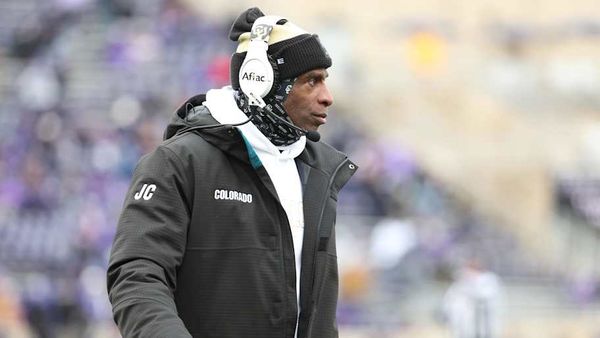
The US supreme court heard oral arguments on Wednesday in Callais v Louisiana, a high-stakes voting rights case in which the court’s conservative majority appears poised to gut one of the most powerful provisions of the Voting Rights Act.
At the heart of the case is section 2 of the Voting Rights Act, which prohibits electoral maps that dilute the voting power of minority groups. Lawyers for the state of Louisiana, a group of “non-African American voters” and the Trump administration say that the court needs to do away with the 2024 map. If the court agrees, it would ultimately set a precedent that makes it considerably harder to bring redistricting lawsuits on the basis of race, and undercut section 2.
A majority of justices appeared poised to weaken section 2
The conservative justices, who make up most of the bench, appear sympathetic to the case that Louisiana’s congressional map – which added a second majority-Black district after a Voting Rights Act lawsuit – violates the constitution.
Justice Brett Kavanaugh, a conservative, pressed Janai Nelson, a lawyer with the NAACP Legal Defense and Education Fund, which was defending the map, as to why section 2 was still needed.
“This court’s cases in a variety of contexts have said that race-based remedies are permissible for a period of time. Sometimes for a long period of time, decades in some cases, but they should not be indefinite and should have an endpoint. What exactly do you think that endpoint should be?” he said.
The chief justice, John Roberts, a conservative but swing vote on the court, pressed Nelson on what the proper role of race in redistricting was.
“What’s the proper size?” he said. “Is it wiggle room we’re talking about or a significant percentage?”
Neil Gorsuch, another conservative justice, appeared skeptical of the use of race in redistricting.
“One argument is often, ‘Well, once you found a section 2 violation, you’ve got a compelling interest to go ahead and discriminate on the basis of race in your remedial map,’” he said.
Getting rid of section 2 would be ‘catastrophic’ for Black voters, lawyers said
Nelson was asked by Justice Elena Kagan what the consequences would be if the court got rid of section 2.
“I think the results would be pretty catastrophic,” Nelson said. She went on to say that many of the Black representatives in Louisiana alone were elected from districts that exist because of the Voting Rights Act. “Any further neutering of section 2 would resurrect the 15th amendment as a mere parchment promise.”
J Benjamin Aguiñaga, the solicitor general of Louisiana, pushed back, saying: “I think there’s been a lot of sky-is-falling rhetoric from the other side in this case. I don’t know what our legislature would do if the court rules in our favor … I don’t think the sky is going to fall.” He said that Republicans would not necessarily wipe out both the majority-Black districts in Louisiana, which elected Democrats last year, because doing so could make Republican districts more competitive.
There was a lot of wrangling over a similar case from 2023
There was a lot of back and forth on Wednesday over Allen v Milligan, a 2023 supreme court case in which the justices said section 2 of the Voting Rights Act required Alabama to add a second majority-Black district.
Nelson told the justices that Milligan was “a nearly identical case”. At another point during the arguments, Justice Kagan pointed out that many of the arguments Louisiana and white voters challenging the map were making were ones the court had already rejected in Milligan.
The message to the rest of the justices was clear – it was an effort to remind them that siding with Louisiana in this case would essentially amount to overturning precedent set just two years ago.
“This court said that it must be particularly concerned about changing its decisions or rejecting stare decisis in cases that involve a sensitive political context like this one, that calls the court’s legitimacy into question in a unique way. My opponents here have not done the labor of showing that precedent should be overturned,” Nelson said.
Recognizing that challenge, Roberts said Milligan “took the existing precedent as a given and considered Alabama’s application of its approach to the evidence”. It was a subtle but potentially significant remark that signaled he might be open to reconsidering the precedent in Milligan.
Louisiana argued that race-based redistricting is unconstitutional
Aguiñaga said in his opening argument: “Race-based redistricting is fundamentally contrary to our constitution.” He added that racial stereotypes were a consequence of the practice.
“They assume, for example, that a Black voter, simply because he is Black, must think like other Black voters, share the same interests and prefer the same political candidates, and this stereotyping system has no logical endpoint.”
Edward Greim, a lawyer for white voters who challenged Louisiana’s map, told the justices: “In today’s America, voters like the appellees are still being racially stereotyped to place them into single-member districts. If it was ever acceptable under our color-blind constitution to do this, it was never intended to continue indefinitely.”
Justice Kavanaugh appeared interested in a proposal that would make it harder to challenge districts
Throughout the arguments, Kavanaugh repeatedly asked lawyers to address a proposal from the justice department that would reconfigure the test plaintiffs need to go through to win a section 2 lawsuit.
Part of that test requires plaintiffs to show they can draw a reasonably configured alternative district that gives the minority group a chance to elect their preferred candidate. The solicitor general’s proposal would add an additional layer to that test. It would require the challengers to show an illustrative district that also meets the political goals of mapmakers.
Such a requirement would be essentially impossible to meet, especially in the US south, where voting is often highly racially polarized, Nicholas Stephanopolous, an election law expert and professor at Harvard, wrote in a blogpost earlier this month.
“Suppose the [solicitor general]’s position were adopted and Louisiana (the home of Callais) decided to get rid of both of its congressional minority-opportunity districts in order to craft an all-Republican map. Any section 2 plaintiff would then have to prove that a reasonably configured, majority-minority district could be drawn while preserving the plan’s all-Republican delegation,” he wrote. “In all likelihood, this showing couldn’t be made because, under conditions of severely racially polarized voting, any majority-minority district would almost certainly elect a Democrat, not a Republican.”
Progressive voting groups said the court’s decision could cost Democrats a significant number of House seats
The supreme court is considering the case as Republicans make a nationwide push to redraw district lines to shore up their advantage in the US House ahead of the 2026 midterms. The aggressive effort is unusual and has been criticized as an anti-democratic effort to prevent GOP politicians from being held accountable to voters.
A decision striking down section 2 ahead of the midterms, depending on timing, could significantly help Republicans. It could cost Democrats about 12 seats in the House, according to a New York Times analysis. A report by two progressive voting rights groups put the number of seats at risk even higher, at 19.
“It’s enough to cement one-party control of the US House for at least a generation,” said the groups, Fair Fight Action and Black Voters Matter.







